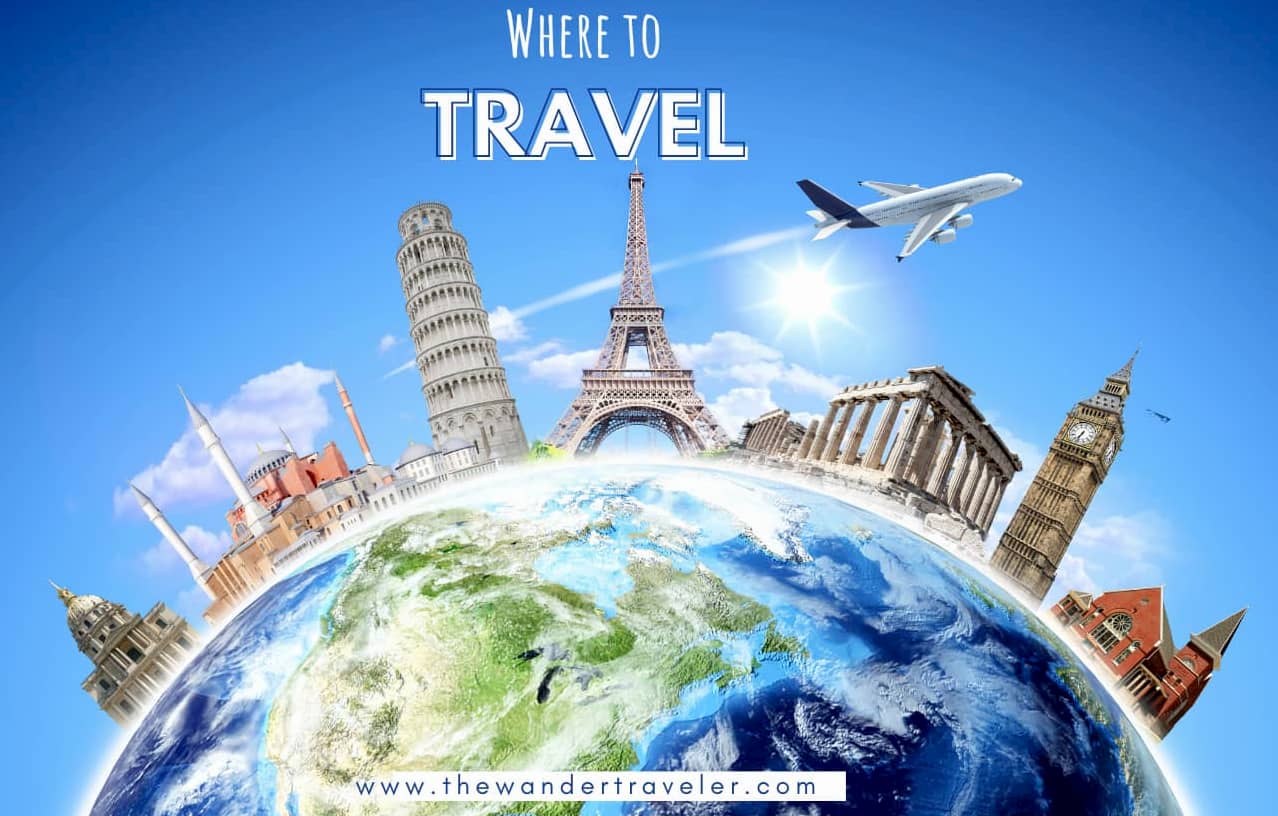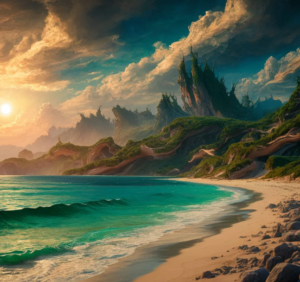There are so many reasons to travel. However, only you can know what yours are.
Each destination has to offer different experiences and each of them is trying hard to please you and it is difficult to decide where to go.
It is necessary to carefully consider what it means to be relevant and exciting, but also sustainable.
We have destinations ranging from pioneering ecotourism, gastronomy and ecotourism initiatives.
The big advantage is that we travelers can make our choice.
To help you discover whether travel is worth your vacation days, I did a survey of traveler friends and global trends.
The result is this definitive guide with the 24 best places to visit in 2024.
Includes extraordinary landscapes in Patagonia, up-close encounters with wildlife alongside Inuit guides in Canada.
There are options for all tastes, although it is an immense challenge to narrow down, it reflects how big, beautiful and diverse our world is.
Here are the 24 places I believe should be on every traveler’s radar next year.
Europe
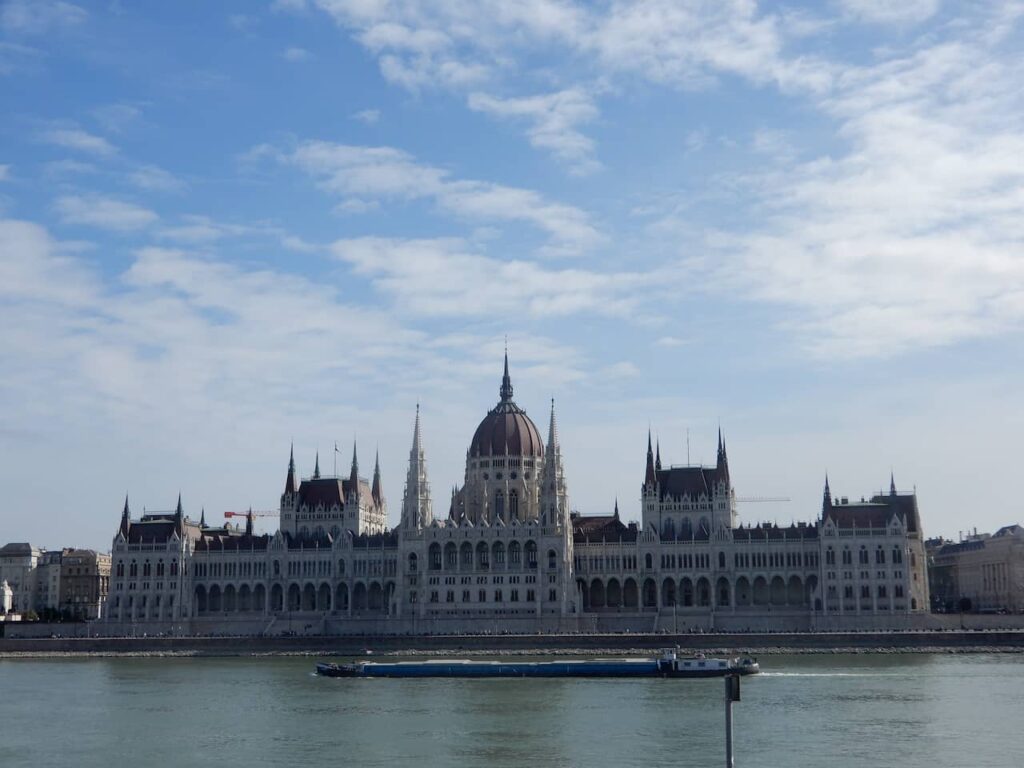
1 - Budapest, Hungary.
Budapest is a city that offers a fascinating mix of history, culture and modernity, making it an attractive destination for travelers.
Famous for its architecture, the Hungarian capital is home to everything from art nouveau and neoclassical to gothic and baroque, with the Blue Danube framing it all.
And there are also mineral-rich thermal baths, with ornate design details and a vibrant atmosphere that contribute to a unique experience.
The city also teems with creativity, which spills over into the vibrant nightlife, which weaves together the story of adversity following the brutality of war and the communist regime.
The Bridges, especially the Chains Bridge – the oldest in the city and a “symbol of unity”, were fully reopened after a two-year restoration,
Crossing the bridges provides great views of Buda Castle and the Hungarian Parliament Building, the Danube River and the city.
See my visit to Budapest here.
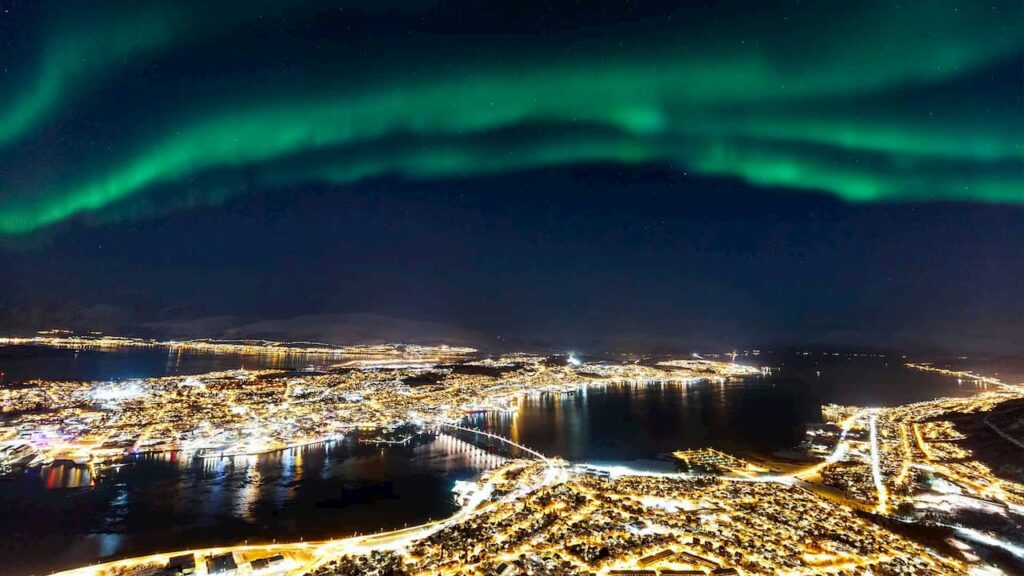
2 - Tromsø, Norway - Northern Lights
Tromsø in Norway is a fascinating place, an Arctic enclave that blends natural beauty with a vibrant cultural life. Imagine yourself surrounded by majestic snow-capped mountains and the crystal clear fjords that cut through the landscape. It is a sight to behold in all seasons of the year.
In winter, Tromsø is known as one of the best places in the world to observe the Northern Lights. The twinkling dance of lights across the night sky is simply magical. Snow activities are also a highlight, such as skiing, snowboarding and even dog sledding or reindeer rides, all part of the experience.
Tromsø is a destination that combines adventure, natural beauty and a unique cultural richness. A true jewel of northern Norway that captivates and enchants everyone who is lucky enough to visit it.
Especially in 2024 solar activity will be at its peak, providing an excellent opportunity to see the Northern Lights.
This will be one of my trips in 2024
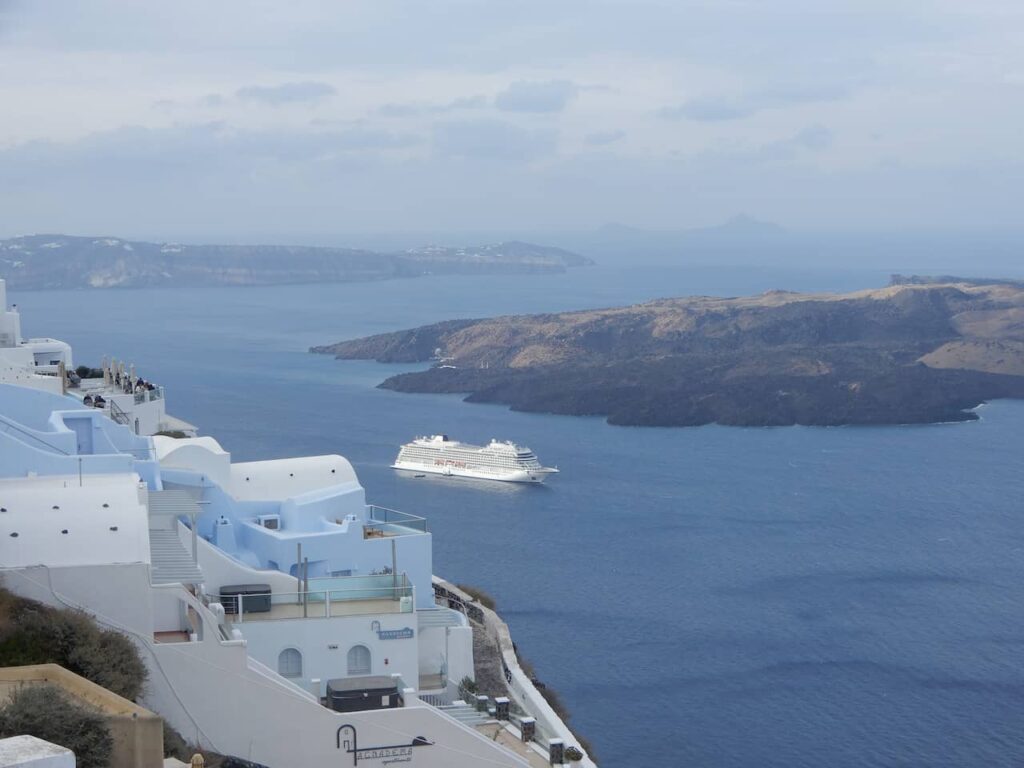
3 - Santorini, Cyclades Islands, Greece.
The Cyclades Islands are a group of Greek islands located in the Aegean Sea, known for their stunning beauty, enchanting architecture and rich history. This group of islands, made up of more than 200 islands, is famous for its crystal clear waters, golden sandy beaches and picturesque villages.
The most famous are Santorini, Mykonos, Paros and Milos
Who hasn’t seen the photos of the white houses with blue windows and that beautiful, shining sea? With more smart stays in 2024, as well as new flights, next summer is the time to make a trip to the Cyclades happen.
With the increase in options, including ecologically responsible ones, it is becoming increasingly easier to enjoy this destination.
Each island has its own personality and unique attractions, but they all share the essence of the Cyclades: natural beauty, stunning sea, warm hospitality and a sense of Greek authenticity. These islands are a dream destination for many travelers looking for a truly enchanting Mediterranean experience.
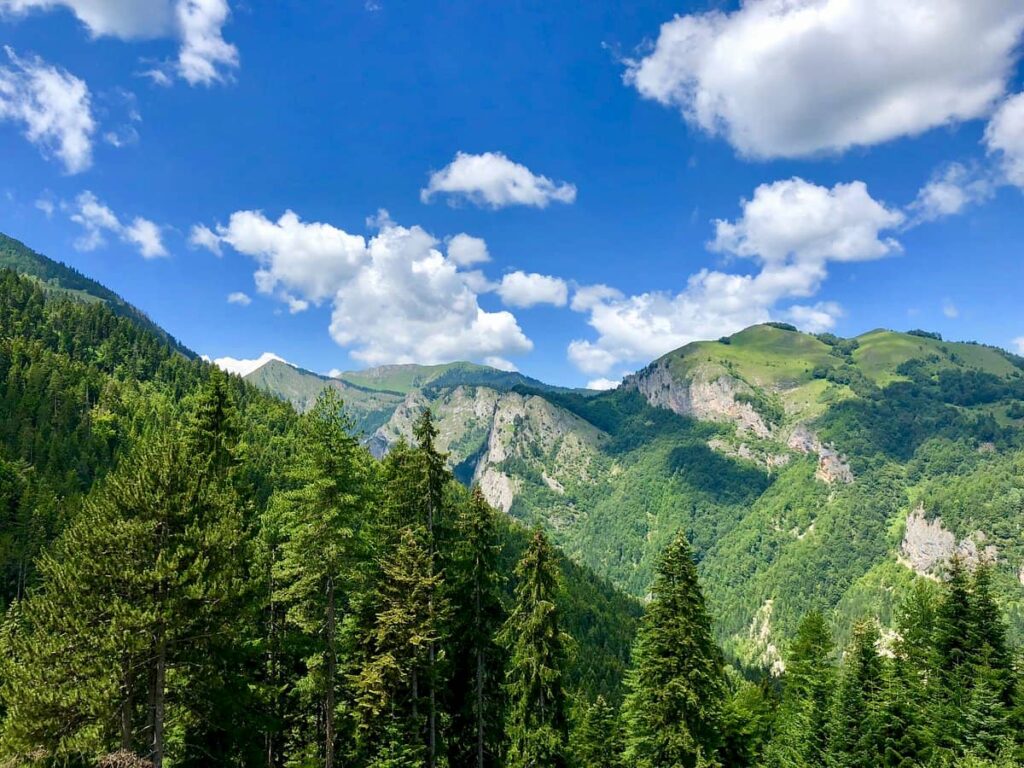
4 - Kosovo.
Kosovo is a small Balkan country, largely unknown to tourists, as it doesn’t have the stunning beaches of Albania or the luxury resorts of Montenegro.
But it has towering peaks, rolling countryside and comforting hospitality, an ideal combination for multi-day hikes and bike rides.
The country is developing in ecotourism and its vocation for nature is being built.
Following in the footsteps of cross-border adventure trails such as the Balkan Peaks and High Scardus, the Trans Dinarica cycling route will open in 2024, passing the minarets that frame the eponymous river of Prizren, passing through the Ottoman market town of Gjakova , and to Peja.
See the article in National Geographic about Trans Dinárica.
And there are many other trails going on.
Kosovo has a lot to offer in its nature, as the cities are much simpler, and of course they are recovering from many years of wars and conflicts, it is only 25 years since the last war, with the declaration of independence from Serbia.
Asia
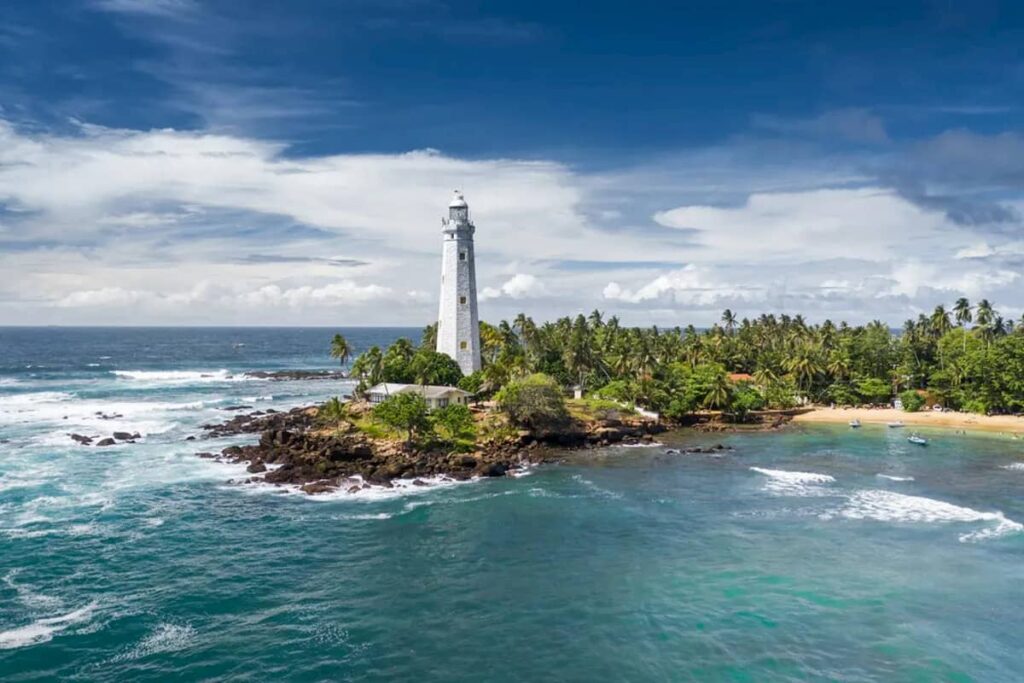
5 - South and Central Sri Lanka.
Sri Lanka is a stunning island in South Asia, known for its rich cultural heritage, natural beauty and fascinating history. Located in the Indian Ocean, it is a diverse country, where ancient traditions mix with a lush landscape.
Sri Lankan culture is colorful and vibrant, reflected in its festivities, traditional dances, art, architecture and delicious cuisine. Religious festivals, such as Esala Perahera, are spectacular, with parades of decorated elephants, dancers and musicians.
Nature is a big attraction, with sandy beaches, mountainous landscapes and lush tropical forests. The country is home to an abundance of wildlife, including elephants, leopards, water buffalo and an impressive array of birds.
Overall, Sri Lanka is a country that offers a captivating blend of natural beauty, cultural heritage and the warm hospitality of its people, making it an incredible destination for travelers to explore and enjoy.
In January 2024, the Galle Literary Festival will return after a five-year hiatus, with performances from literary figures such as Shehan Karunatilaka and Alexander McCall Smith, while Gourmet Galle, the country’s new food festival, highlights 12 chefs across 12 venues, ranging from beaches to rice paddies over a 12-week period from January to March.
Inland, the development of the Pekoe Trail, a new network of nearly 200 miles of hiking routes that winds through the highlands of Sri Lanka.
Traversing historic tea plantations, colonial estates, local villages, sacred shrines and biodiverse forests, it’s a new way to experience Sri Lanka’s lush mountainous region.
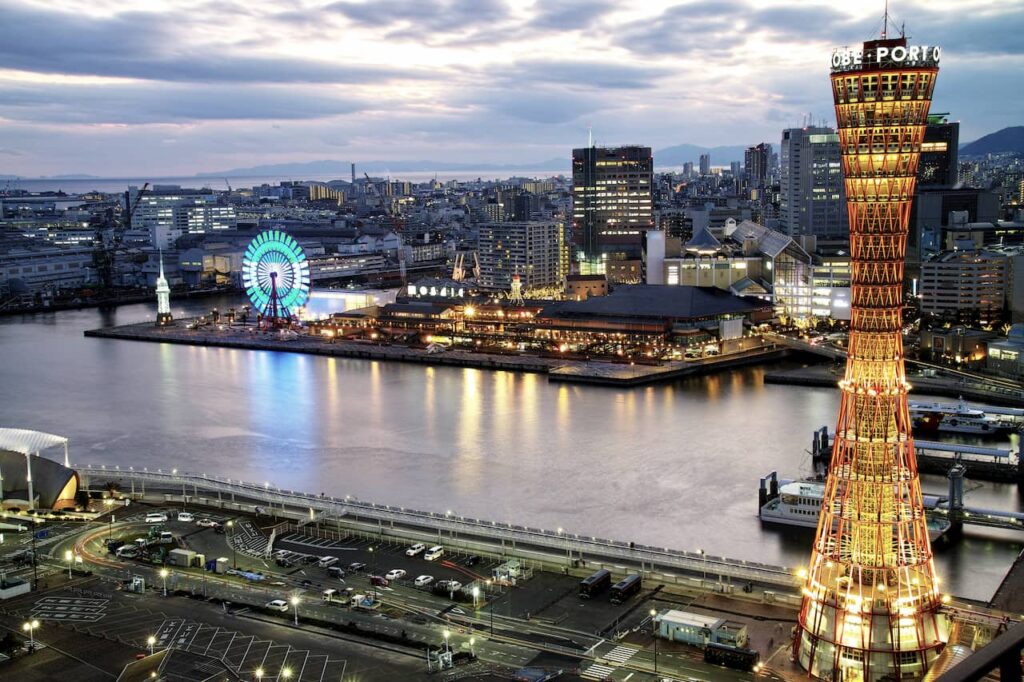
6 - Kobe, Japan.
Kobe, between steep mountains and sparkling seas in southwestern Japan.
It is a vibrant and cosmopolitan port city located in the Kansai region of Japan.
Known for its unique blend of modernity, foreign cultural influences and stunning natural beauty.
One of Kobe’s most iconic landmarks is its port, which has played a crucial role in Japan’s international trade throughout history. The port area has been transformed into a modern and elegant space, full of attractions, such as Kobe Harborland, a complex with shops, restaurants, parks and entertainment.
Cuisine is a fundamental part of Kobe’s identity. It is famous for its delicious and succulent Kobe beef, a high-quality beef known for its exceptional marbling and flavor. Local restaurants offer a variety of dishes that highlight this famous type of meat.
Furthermore, Kobe has a fascinating architecture, where the modern mixes with the traditional. The Kitano-cho neighborhood is famous for its Western-style houses, reminiscent of the time when the city was opened to international trade. These historic homes are now residences, museums and charming cafes.
The Great Earthquake of 1995 had a profound impact on Kobe, destroying much of the city. However, Kobe recovered remarkably and became a symbol of resilience and rebirth.
Kobe’s relaxing and welcoming atmosphere, along with its rich food culture, stunning mountain and sea views, make it a charming destination for visitors to explore in Japan.
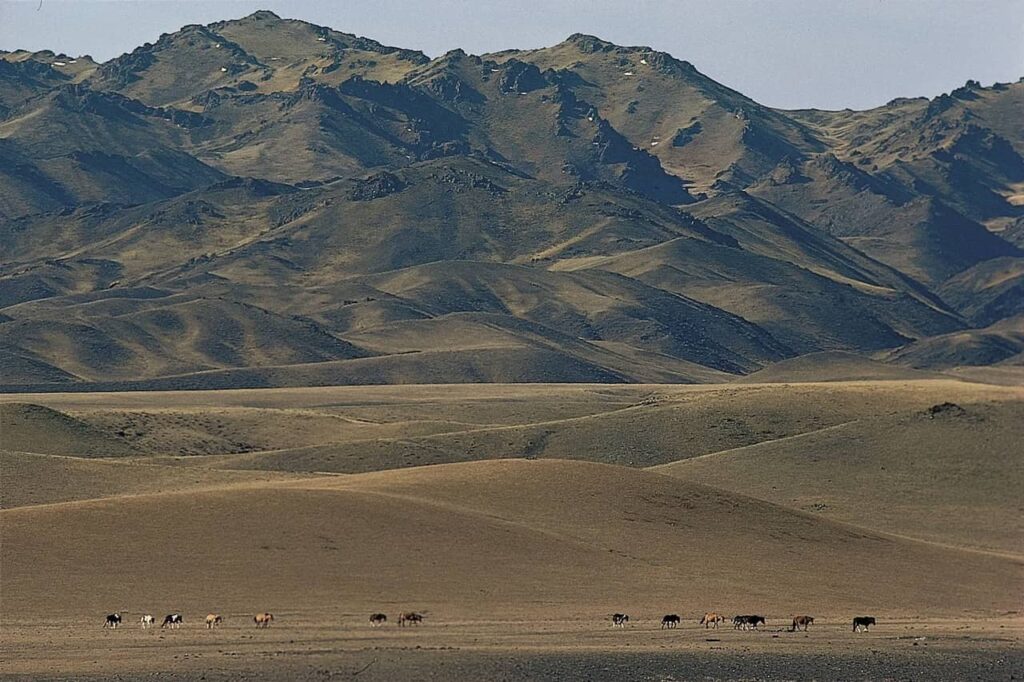
7 - Mongolia
Mongolia is a vast, epic land known for its vast steppes, nomadic traditions, and rich history. Located in Central Asia, it is a country of striking contrasts, with a deeply rooted culture and stunning landscapes.
The most emblematic image of Mongolia is that of its vast plains, which stretch as far as the eye can see. The steppes are home to nomads, who live in gers (traditional tents) and maintain a deep connection with nature and their herds of horses, sheep, goats and camels.
The history of Mongolia is marked by the time of the Mongol Empire, led by Genghis Khan in the 13th century. This empire was one of the largest in history, extending over vast areas of Asia and Europe. The influence of this period is still visible in Mongolian culture and traditions.
Ulaanbaatar, the capital, is a starting point with its mix of modernity and cultural heritage. It’s where urban life meets nomadic tradition, with bustling markets, museums that tell the country’s history, and cultural sites that celebrate Mongolian art and traditions.
Furthermore, Mongolia’s natural landscapes are stunning. From the vast steppes to the high mountains such as the Altai and Khangai Mountains and the Gobi Desert offer unique beauty and unique experiences such as camel riding and wildlife viewing.
Overall, Mongolia is a place of vastness and authenticity, where travelers can experience nomadic life, explore spectacular landscapes, and immerse themselves in a rich, historic culture.
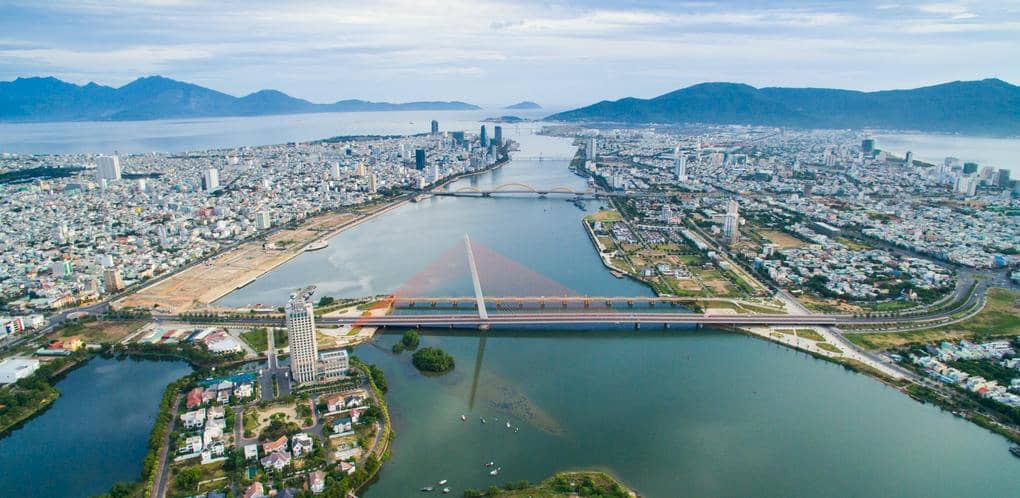
8- Da Nang, Vietnam.
Da Nang, located on Vietnam’s central coast, is a vibrant city that combines stunning beaches, majestic mountains and an enchanting mix of modernity and tradition.
One of the most iconic attractions is the Dragon Bridge, an impressive bridge that spans the Han River. At night, this bridge lights up with vibrant colors and puts on a light show, making it a focal point for locals and visitors alike.
Da Nang’s beaches, such as My Khe Beach and Non Nuoc Beach, are famous for their white sands and crystal clear waters, attracting surfers, sunbathers and water sports enthusiasts from all over the world.
The city is also home to Marble Mountain, a complex of limestone mountains that contain fascinating caves, Buddhist temples and panoramic views of the city and sea. It’s a sacred site with pagodas and ornate Buddhist statues, providing a spiritual atmosphere and a chance to explore Vietnam’s religious history.
Furthermore, the cuisine in Da Nang is diverse and delicious. The city is known for dishes like banh xeo (crispy rice crepe), banh mi (Vietnamese sandwich) and, of course, pho, a world-renowned Vietnamese noodle soup.
Da Nang is also a strategic point for exploring other nearby attractions, such as the ancient city of Hoi An, a UNESCO World Heritage site, and the Hai Van Mountains, with stunning panoramic views.
The Son Tra Peninsula – located just 20 minutes from the city center – is another tourist attraction, home to a 17-story, 67-meter statue of the Lady Buddha, as well as endangered red-footed douc langurs that live in the reserve native to the peninsula.
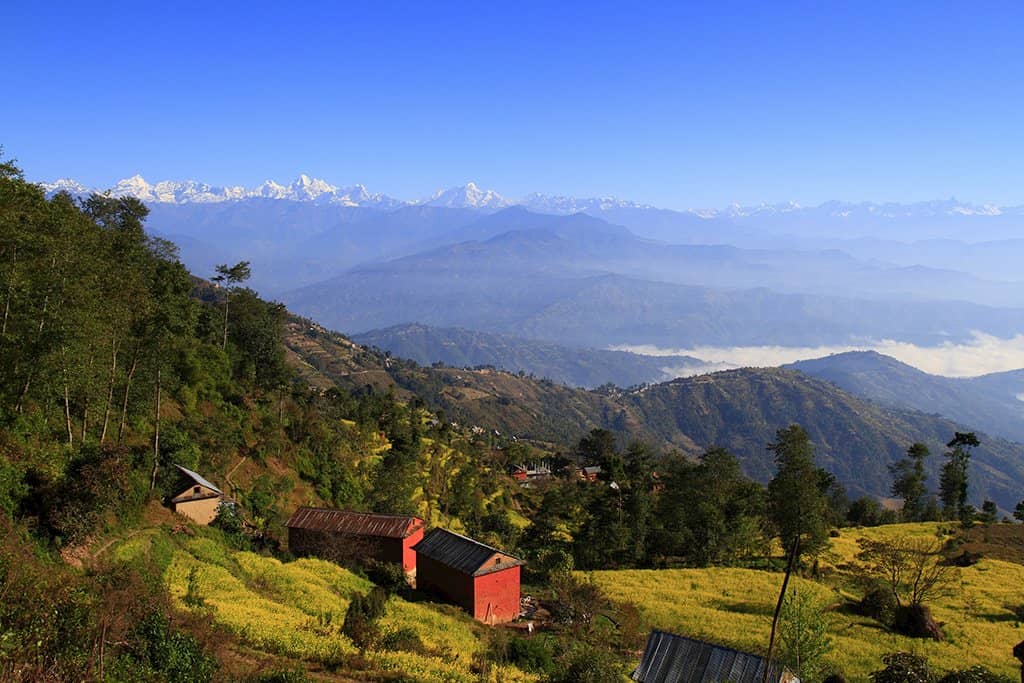
9 - Kathmandu Valley, Nepal.
The Kathmandu Valley is a geographically and culturally rich area that is home to the country’s capital, Kathmandu. It is an extraordinary place that combines a rich cultural heritage, natural beauty and a vibrant atmosphere.
Kathmandu, the valley’s main city, is a center of cultural and spiritual activity. Its streets are full of colorful markets, ancient temples and religious shrines. Kathmandu’s Durbar Square is an iconic location where historic temples, palaces and ancient statues capture the essence of Nepali architecture and history.
In addition to Kathmandu, the Valley is home to Patan and Bhaktapur, two ancient cities that are also UNESCO World Heritage Sites. Patan is famous for its Durbar square, rich in temples and palaces of Novaari architecture, while Bhaktapur is known for its cobblestone streets, squares and well-preserved monuments that reflect Nepali culture and art.
The spiritual richness of the Kathmandu Valley is also evident in its temples and shrines. Pashupatinath Temple, an important Hindu pilgrimage site on the banks of the Bagmati River, and Boudhanath Stupa, one of the largest stupas in the world and a sacred site for Buddhists, are destinations that radiate a unique spiritual atmosphere.
Nature also plays a significant role in the Kathmandu Valley, with surrounding green hills offering spectacular views and hiking trails. The proximity of the Himalayan mountains adds a special touch to the landscape, and many visitors use Kathmandu as a starting point for their trekking adventures, such as the trail to Everest Base Camp.
Overall, the Kathmandu Valley is a cultural and historical treasure, filled with architectural, spiritual and natural wonders. It is a destination that captivates travelers with its rich heritage, vibrant energy and stunning natural beauty.
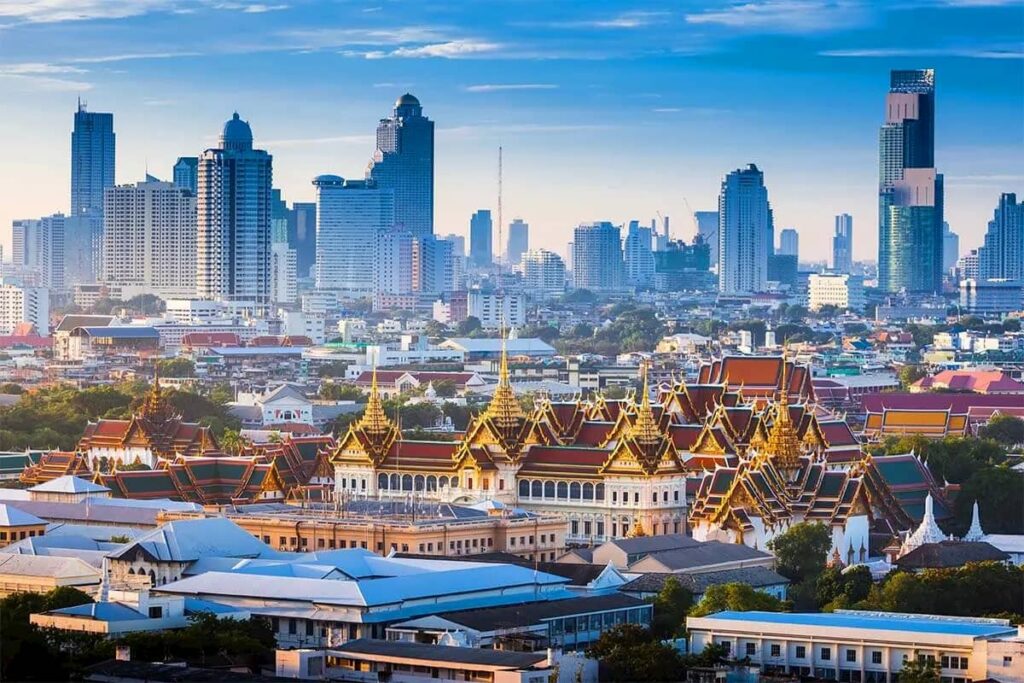
10 - Bangkok, Thailand.
Bangkok, the capital of Thailand, is a pulsating, multifaceted metropolis that captivates visitors with its unique combination of tradition and modernity. It is a city that stimulates the senses, offering a truly immersive and diverse experience.
Stunning temples such as Wat Pho, known for the Reclining Buddha, and the iconic Wat Arun, with its stunning architecture, are testaments to the city’s rich cultural and spiritual heritage. The Grand Royal Palace is another highlight, with its majestic buildings that date back to the country’s royal history.
In addition to its rich history, Bangkok is a modern and bustling city, with gleaming skyscrapers, luxurious shopping centers and a gastronomic scene that pleases all palates. From street food stalls to renowned restaurants, delicious Thai dishes like pad thai and tom yum goong are a real treat for foodies.
City attractions.
Bangkok’s markets are a unique experience, from the bustling Damnoen Saduak Floating Market to the lively Chatuchak Market, where you can find everything from clothing and crafts to antiques and exotic pets.
The city’s nightlife is legendary, with a variety of options from riverside bars to lively clubs and laid-back pubs. Khao San Road is famous for its bustling nightlife, while areas like Thonglor and Silom offer a more sophisticated and eclectic scene.
Bangkok is a city that offers a fascinating mix of tradition and modernity, where warm Thai hospitality meets urban hustle and bustle. It is a destination that captivates travelers with its diversity, authenticity and a truly unique atmosphere.
With its family-run noodle restaurants, incense-infused shrines and noisy tuk-tuks through centuries-old alleys, Chinatown has always been one of Bangkok’s busiest neighborhoods.
Chinatown, known locally as Yaowarat, is a historic neighborhood that encapsulates the city’s Chinese heritage. It’s a labyrinth of narrow streets filled with shops, food stalls, ancient temples and an atmosphere that pulses with activity day and night.
Cuisine is one of Chinatown’s biggest attractions. You will find a multitude of restaurants, street food stalls and markets offering an incredible variety of Chinese and Thai dishes. From rice noodle soup to fresh seafood, duck dishes, dim sum and a wide range of local delicacies, Chinatown is a foodie paradise.
Oceania
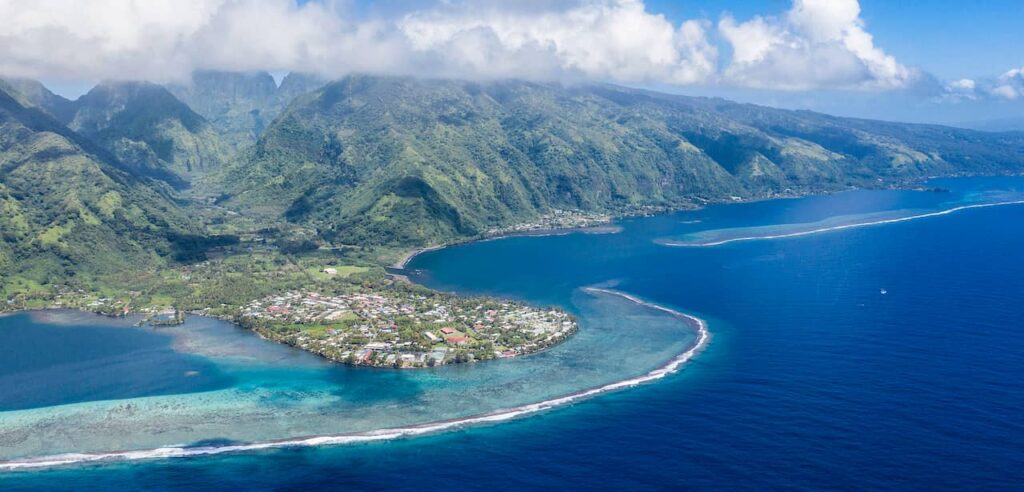
11 - French Polynesia.
French Polynesia is a collection of paradisiacal islands in the South Pacific known for its stunning natural beauty, crystal clear waters and captivating culture. Made up of 118 islands divided into five archipelagos, including the well-known islands of Tahiti, Bora Bora and Moorea, this region is a true tropical paradise.
Tahiti, the largest island and central point of French Polynesia, is the cultural and economic heart of the archipelago. Papeete, its capital, is a bustling city offering colorful markets, art galleries, restaurants and a lively nightlife. The island is also famous for its stunning beaches such as Papenoo Beach and Matira Beach.
Bora Bora is another prominent destination, known for its crystal clear waters and turquoise lagoons. It is a paradise for diving and snorkeling lovers, with stunning coral reefs and an incredible variety of marine life. Its luxurious beachfront resorts, with overwater bungalows, offer an exclusive and unforgettable lodging experience.
Moorea, with its lush green mountains, dramatic peaks and picturesque bays, is a natural paradise. Opportunities for hiking, diving, kayaking, and whale watching make this island a popular destination for adventure and nature lovers.
Polynesian culture is rich in traditions and customs. Tahitian dance, with its graceful movements and colorful costumes, is a vibrant artistic expression. Polynesian drums and flower leis, known as lei, are essential elements in local festivities.
The natural beauty, vibrant culture and sense of serenity that French Polynesia offers make it a dream destination for many, a true escape to a tropical paradise.
Tahiti is in the spotlight as Teahupoo, a south coast village and home to one of the “deadliest waves in the world”, prepares to host the surfing competition at the Paris Olympic Games.
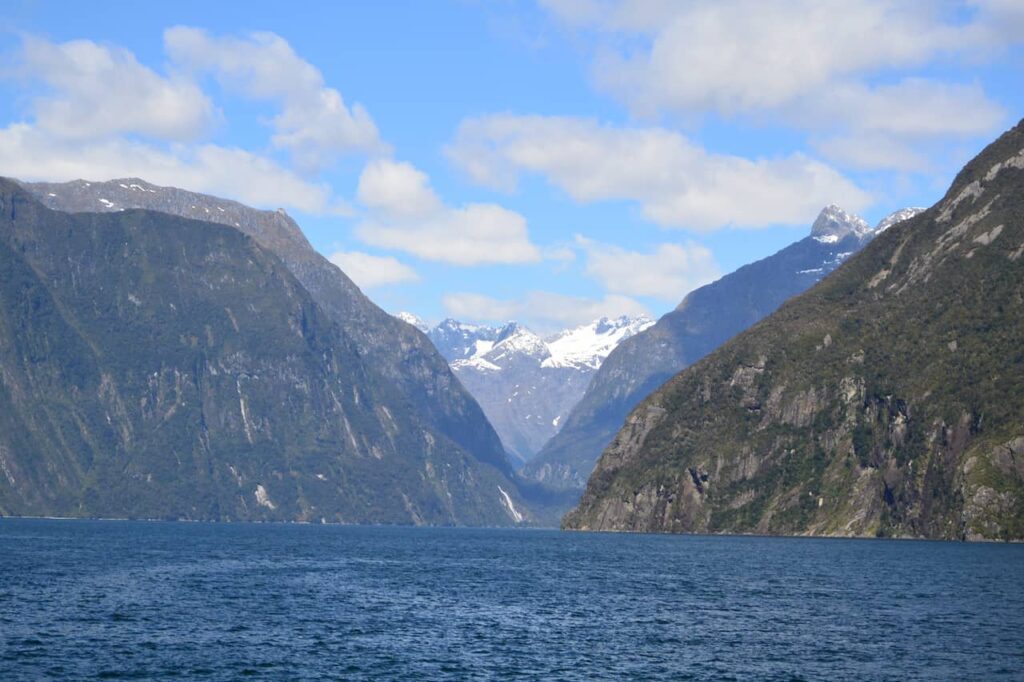
12 - South Island, New Zealand.
With its lush rainforests and aquamarine lakes framed by snow-capped peaks, New Zealand’s South Island is full of superlatives.
Queenstown, one of the most popular cities in the South Island, is a world-renowned adventure destination. Surrounded by the peaks of the Remarkables and on the shores of Lake Wakatipu, it offers a wide range of activities such as skiing, snowboarding, bungee jumping, skydiving and hiking.
In October 2024, the 61-kilometre Tuatapere Hump Ridge Track will become New Zealand’s 11th Great Walk. Offering panoramic views of Fiordland, it offers mountaintop accommodation such as Okaka Lodge and Port Craig Lodge, which offer amenities not always found on other Great Walks, including hot showers, king-size beds and even helicopter transport
The Fiordlands, like the famous Milford Sound and Doubtful Sound, are spectacular glacier-carved gorges with steep walls, towering waterfalls and unrivaled natural beauty. Fjord cruises offer spectacular views and the chance to spot seals, dolphins and even whales.
The Southern Alps region is home to Mount Cook, New Zealand’s highest peak, and offers incredible opportunities for walking, climbing and breathtaking panoramic views. Abel Tasman National Park, in the far north of the South Island, is known for its golden sandy beaches, hiking trails and kayaking in crystal clear waters.
Christchurch, the largest city in the South Island, is known for its reconstruction after the 2010 and 2011 earthquakes. It offers an interesting mix of contemporary architecture and relaxing parks, such as Hagley Park and the Botanic Gardens.
New Zealand’s South Island is a nature lover’s paradise, offering an incredible variety of landscapes and experiences. Its pristine beauty and diversity make it a truly memorable destination for travelers in search of adventure and contemplation of nature.
See here my 23-day trip in a Motorhome through the north and south islands.
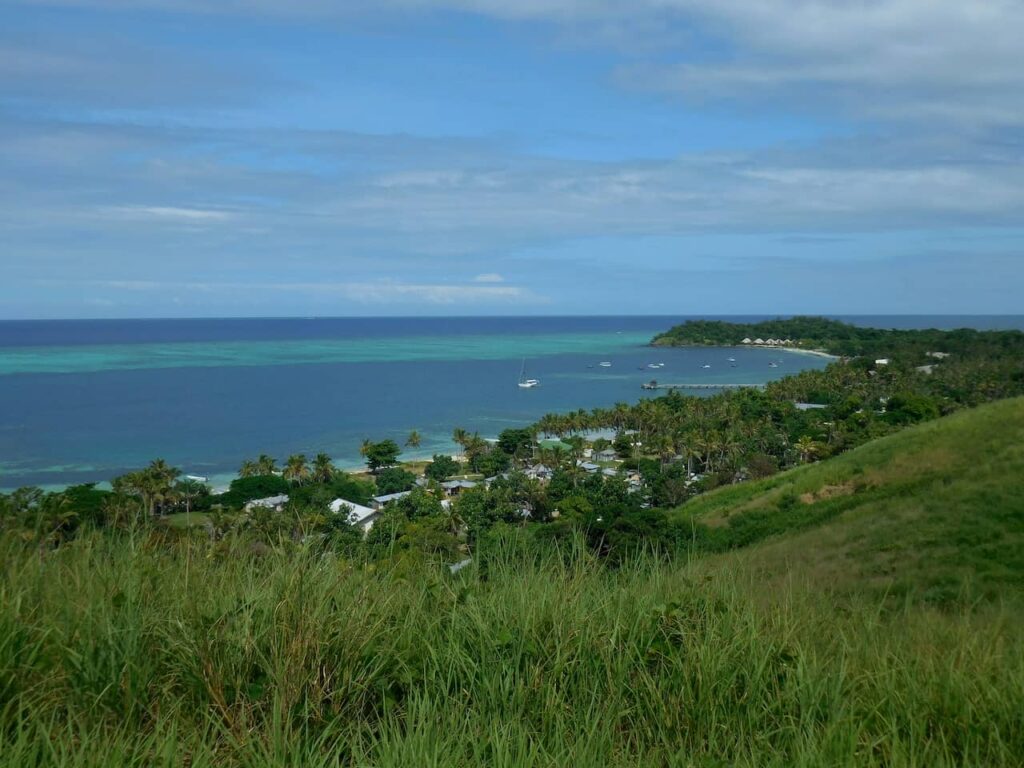
13 - Fiji
Fiji is an archipelago in the South Pacific known for its stunning beaches, crystal clear waters, rich culture and warm hospitality. Made up of more than 300 islands, Fiji offers an incredible variety of experiences for travelers.
Fiji’s beaches are truly spectacular, with white sand and turquoise waters. Popular destinations such as Yasawa and Mamanuca Islands offer luxury resorts and exciting water activities such as diving, snorkeling, surfing and cruises to explore coral reefs and diverse marine life.
Fijian culture is rich and welcoming. Fijians are known for their hospitality and traditional customs, which include welcoming ceremonies, folk dances and local crafts such as weaving and wood carving.
Fiji’s capital, Suva, is a bustling city that offers a mix of cultural influences, from vibrant markets to museums and art galleries. Nadi, another important destination, is known for being the gateway for many visitors, with its international airport and proximity to the Denarau region, full of resorts and golf courses.
Fiji’s culinary culture offers a mix of traditional dishes such as kokoda (fish ceviche with coconut milk) and lovo (an underground cooking method), as well as a wide variety of fresh tropical fruits.
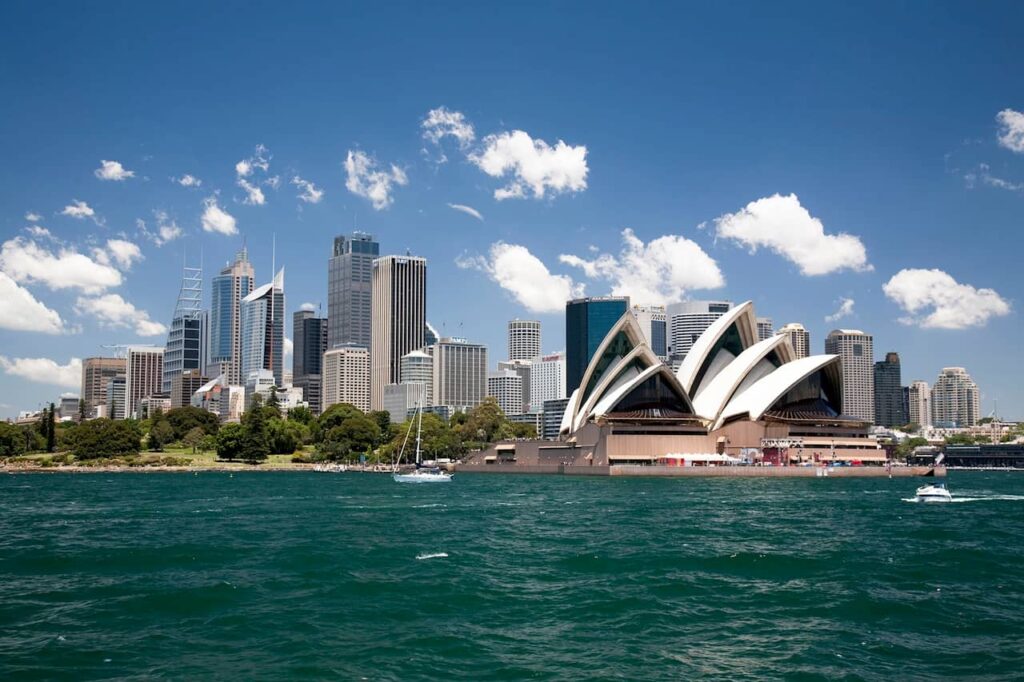
14 - Sydney, Australia.
Sydney, Australia’s largest city, is one of the world’s most iconic destinations, known for its natural beauty, vibrant city life and iconic icons. Situated around the majestic Sydney Harbor and famous for its Opera House and Harbor Bridge, Sydney offers a unique mix of culture, outdoor activities and a diverse dining scene.
Sydney Opera House is one of the city’s most recognizable landmarks, with its innovative architecture and waterfront location. In addition to being an iconic landmark, it is a venue for world-class performances, theater, opera and cultural events.
The Harbor Bridge is another iconic Sydney landmark. It is possible to climb the bridge for panoramic views of the city and port, providing a unique experience for visitors.
Bondi Beach is one of Sydney’s most famous beaches, known for its golden sands, surfing waves and laid-back atmosphere. In addition to Bondi, other beaches such as Manly, Coogee and Bronte offer opportunities for water activities and seaside relaxation.
The city is a food lover’s paradise, with an impressive array of restaurants, cafes and markets. From gourmet dishes to street food, Sydney’s culinary diversity reflects the city’s multiculturalism.
The surroundings of Sydney are also charming. The Blue Mountains, located a short train ride away, offer hiking trails, waterfalls and stunning scenery. The Royal National Park is a natural sanctuary close to the city, ideal for walks, picnics and wildlife watching.
North America
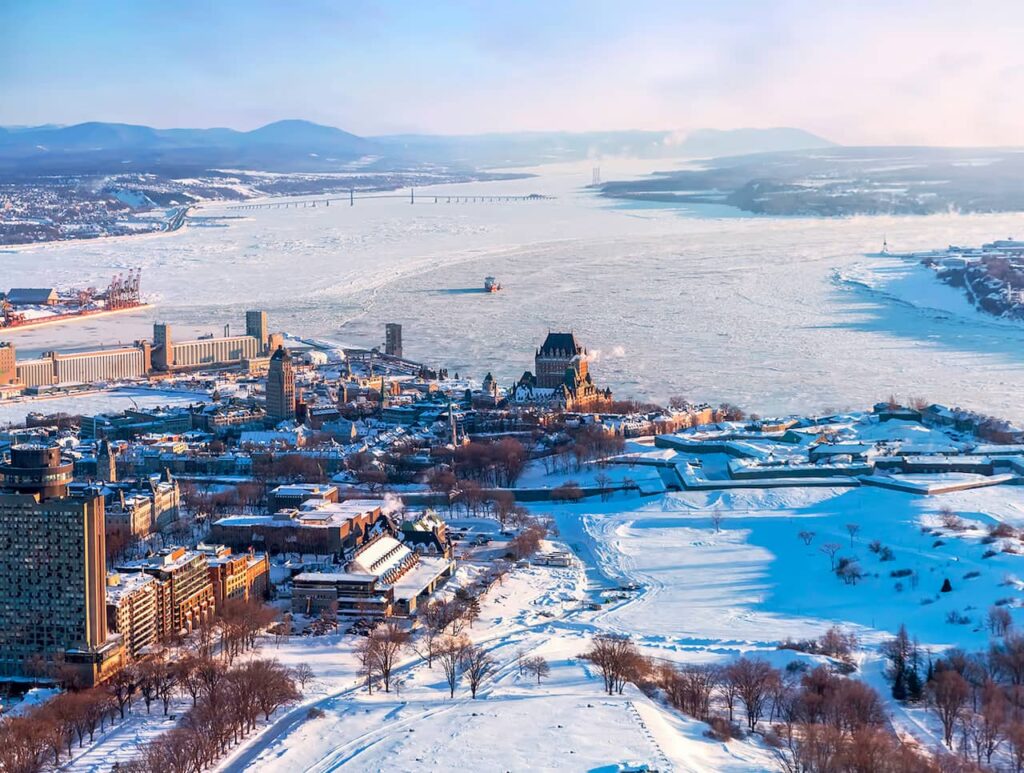
15 - Quebec, Canada.
Quebec is a Canadian province known for its rich historical heritage and charming architecture. Located in eastern Canada,
Quebec City, the provincial capital, is a historical gem and a UNESCO World Heritage Site. Its old town, called Vieux-Québec, is surrounded by fortified walls, with cobblestone streets, colonial architecture and charming cafes, shops and restaurants. Château Frontenac, a historic hotel and an icon of the city, dominates the cityscape and offers stunning views of the Saint Lawrence River.
The largest of Canada’s 10 provinces, Quebec offers a vast stage for wide-ranging Indigenous-led experiences, from sipping beer at a Mohawk-run brewery near the U.S. border to polar bear watching with Inuit guides in the far north. Nunavik, Quebec’s northernmost region and homeland of the Inuit, has long been off most travelers’ radar, but new experiences offer immersion in nature and culture.
The French language is predominant in Quebec, and this is reflected not only in the language, but also in culture, cuisine and the arts. Quebec cuisine is known for dishes such as poutine (fries with cheese and gravy) and tourtière (a typical meat pie), as well as a strong tradition in the production of maple syrup.
Culture and the arts play a significant role in Quebec, with music festivals, theater and cultural events throughout the year. The Quebec Summer Festival and Quebec Carnival are renowned events that celebrate the province’s culture and diversity.
Central America
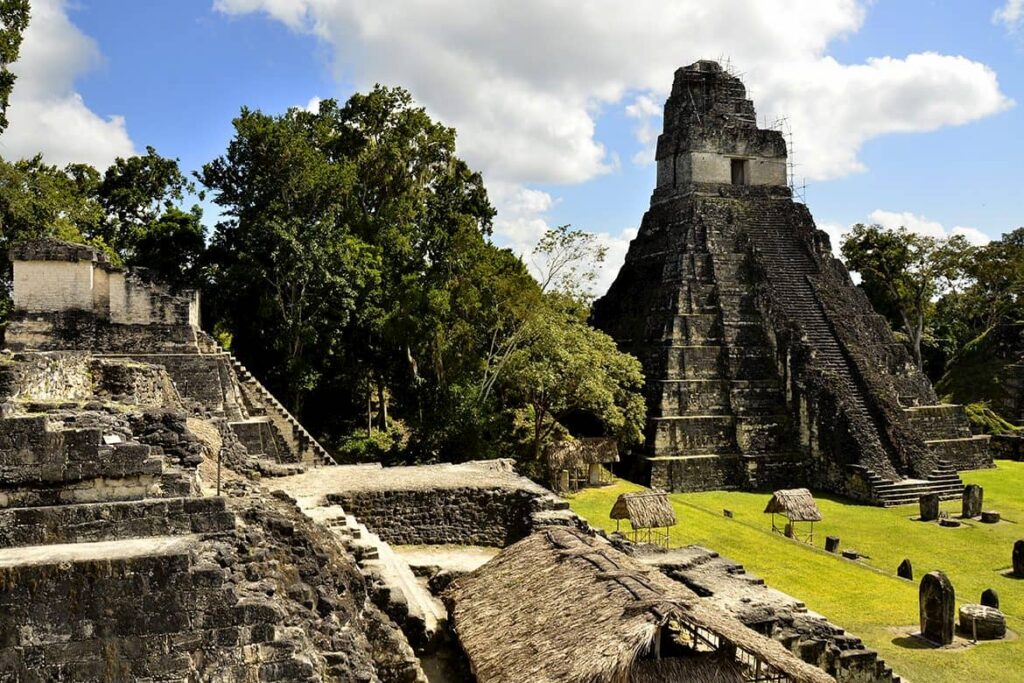
16 - Guatemala.
Guatemala is a Central American country known for its rich cultural heritage, fascinating history, and stunning landscapes that range from jungles to volcanoes and ancient archaeological sites.
The city of Antigua Guatemala is one of the country’s highlights. With its well-preserved colonial architecture, cobblestone streets and historic buildings, it is a UNESCO World Heritage Site. It is also a cultural and artistic center, with galleries, craft markets and festivals celebrating Guatemalan culture.
Mayan culture plays a crucial role in Guatemalan identity. Archaeological sites like Tikal, one of the grandest Mayan cities, are testaments to the country’s rich pre-Columbian history. Tikal is famous for its ancient pyramids, towering temples and lush jungles, providing a fascinating insight into Mayan civilization.
Guatemala is blessed with a diverse landscape. Lake Atitlán, surrounded by indigenous villages and volcanoes, is considered one of the most beautiful lakes in the world. Its calm waters and picturesque setting attract visitors looking for relaxation and contact with nature.
Volcanoes are also part of the Guatemalan landscape. The Pacaya volcano is one of the most accessible for hiking and offers incredible views of the region. Other volcanoes, such as Volcán de Fuego and Volcán de Acatenango, are popular mountain climbing destinations and offer stunning panoramic views.
Guatemalan culture is diverse, with a rich tradition of crafts, including colorful textiles, ceramics and wood carvings. Local markets, such as Mercado de Chichicastenango, are great places to buy souvenirs and experience the authenticity of local life.
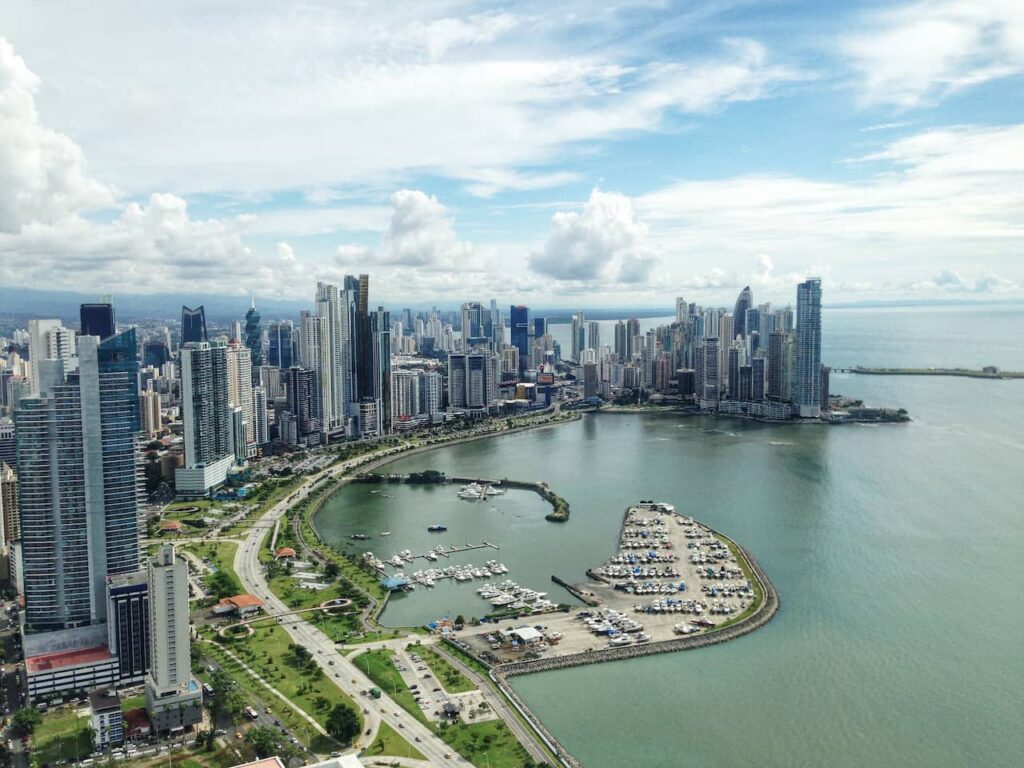
17 - Panama City, Panama.
Panama City is the capital and largest city of Panama, located in the heart of the country, on the isthmus that connects Central and South America. It is a vibrant, cosmopolitan metropolis known for its unique blend of modernity, history and natural beauty .
One of the most recognizable landmarks is the Panama Canal, an impressive feat of engineering that connects the Atlantic Ocean to the Pacific Ocean. Visiting the canal and watching the ships passing through the locks is a fascinating experience that allows you to understand the historical and economic importance of this waterway.
Casco Viejo is the historic center of Panama City and is a UNESCO World Heritage Site. This charming neighborhood is characterized by its Spanish colonial architecture, cobblestone streets, old churches and picturesque squares. It also houses restaurants, bars, art galleries and boutique hotels.
The city’s modernity is evident in its gleaming skyscrapers and districts like Punta Paitilla and Punta Pacifica, known for their luxury apartment towers, shopping malls, gourmet restaurants and lively nightlife.
The city offers a diverse culinary scene that reflects the fusion of Panamanian cultures. From traditional Panamanian cuisine to international fusion food, visitors can enjoy a variety of culinary options throughout the city.
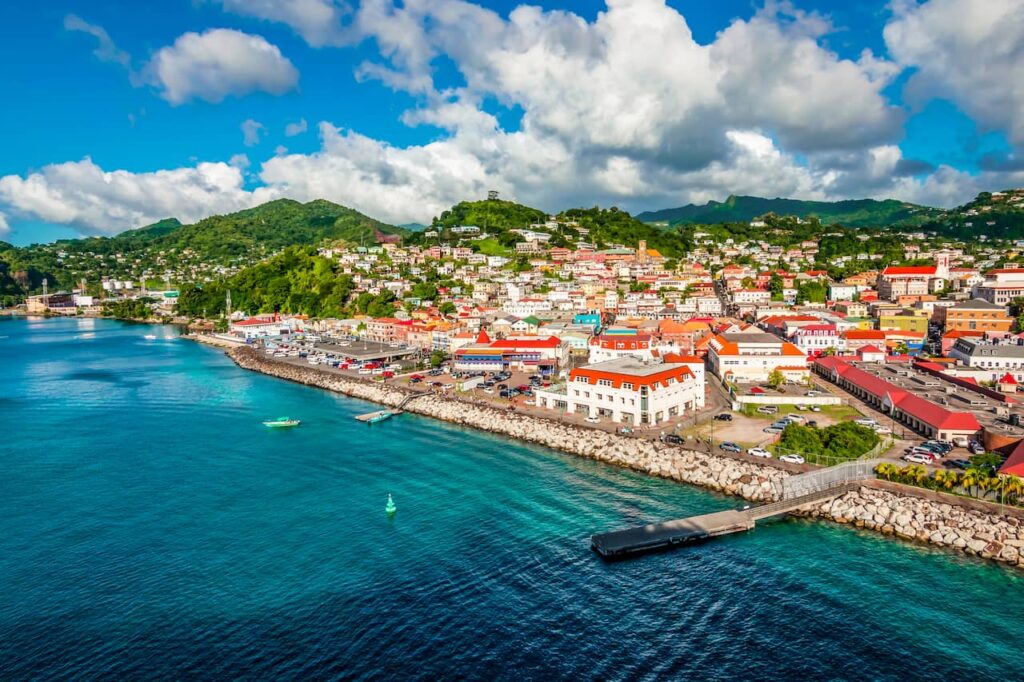
18 - Grenada, island country in the Caribbean.
Grenada, in the Caribbean, is an island that is part of the Lesser Antilles. Known for its white sand beaches, crystal clear waters and lush natural scenery, it is a popular destination for tourists looking for a tropical paradise.
The capital, St. George’s, is a picturesque and colorful city with a busy port, colonial architecture and historic forts. Fort George offers panoramic views of the city and harbor.
Grenada’s beaches, such as Grand Anse, Morne Rouge and Magazine Beach, are popular destinations for relaxing, diving, snorkeling and enjoying water activities.
In addition to beaches, the island offers opportunities for nature walks, visits to spice plantations (such as in the Spice Valley) and exploring waterfalls, such as Annandale and Seven Sisters Waterfalls.
South America
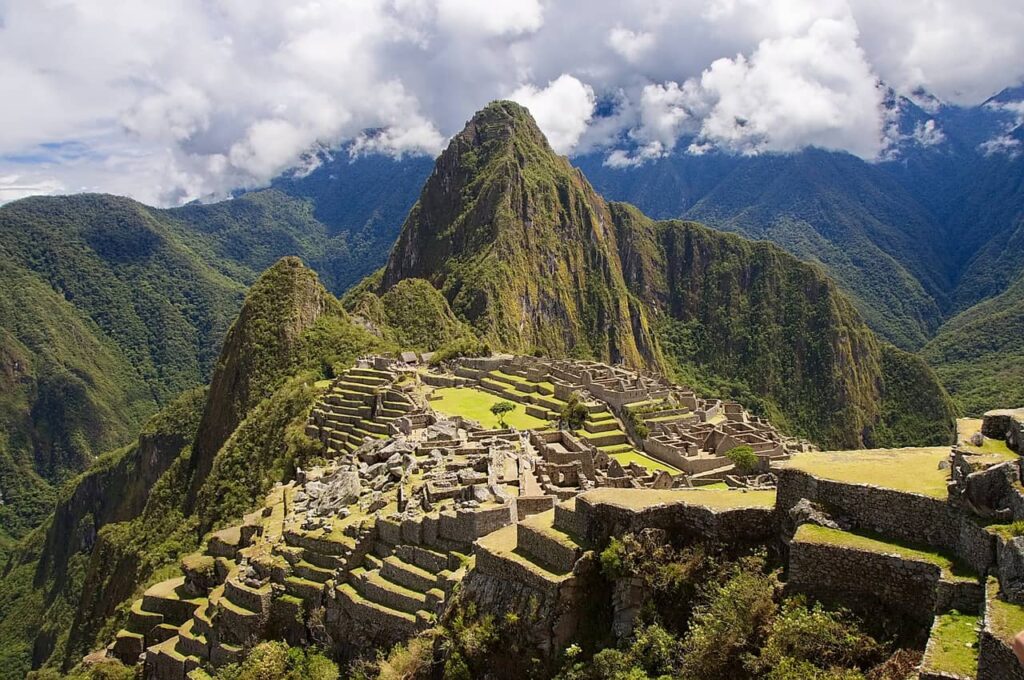
19 - Machu Picchu, Peru.
Machu Picchu is one of the world’s most impressive archaeological wonders and one of Peru’s most iconic tourist destinations. Located in the Andes Mountains, this ancient city of the Incas is recognized for its beauty, mysticism and architectural ingenuity.
Built in the 15th century and abandoned in the same century, Machu Picchu was discovered in 1911 by archaeologist Hiram Bingham. Its remote location, on top of a mountain, surrounded by spectacular scenery, contributes to its mysterious and enchanting aura.
The architecture of Machu Picchu is an impressive testament to the skill of the Incas. The structures are composed of perfectly cut and fitted stones, some weighing several tons, without the use of mortar. Temples, agricultural terraces, residences and water fountains are part of this complex, which has remarkable symmetry and precision.
The Intihuatana, a carved stone, is one of the most significant features of Machu Picchu. It is believed to function as a solar or astronomical clock, serving to determine the solstices and equinoxes.
To reach Machu Picchu, visitors can take the Inca Trail, a multi-day journey that offers a unique experience, with stunning landscapes and the opportunity to visit archaeological sites along the way. Another option is to get to Aguas Calientes by train and then take a bus to the entrance of Machu Picchu.
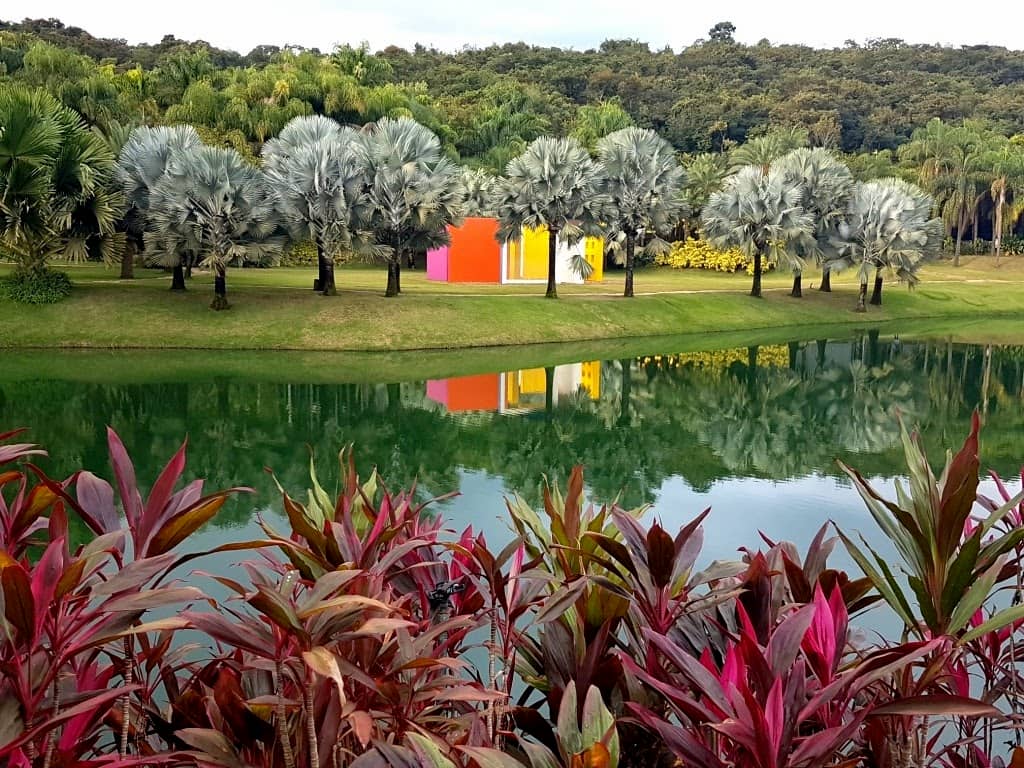
20 - Inhotim, Brazil.
Inhotim is one of the most notable and distinctive contemporary art complexes and botanical gardens in the world, located in the Atlantic Forest in Brumadinho, Minas Gerais, Brazil. This extraordinary place combines art, nature and landscaping in a unique way, providing a unique cultural and sensorial experience for its visitors.
The Inhotim Institute houses an impressive collection of contemporary art, with works by renowned national and international artists. There are art installations, sculptures, paintings, videos and interactive works of art spread across a vast territory of more than 100 hectares, integrated into the lush landscape of gardens and natural areas.
The artworks are distributed across individual galleries and pavilions dedicated to specific artists, providing an immersive and intimate experience with each creation. The idea behind Inhotim is to promote interaction between art, nature and the public, offering a space where artistic contemplation takes place amidst a stunning landscape.
In addition to works of art, Inhotim has an extraordinary botanical garden, with a rich diversity of native and exotic plant species, many of which are rare and threatened with extinction. The gardens have been meticulously designed and maintained, providing not only a stunning backdrop for the artwork, but also serving as an educational environment about flora conservation.
– and one that begs for slow, careful exploration. Here, one of the most diverse collections of contemporary art in the world, with pieces ranging from large-scale sculptures to paintings and photographs, spans thousands of hectares of botanical gardens. An art center of this magnitude begs for a multi-day visit, but the lack of accommodation nearby makes this difficult. This will all change next year.
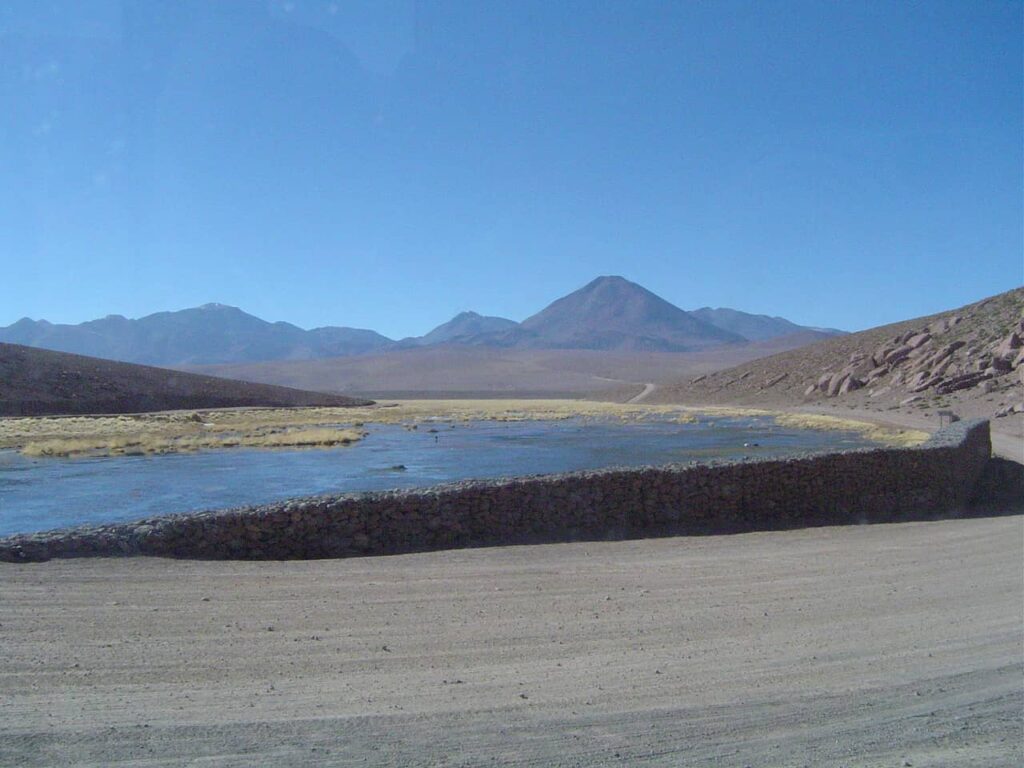
21 - San Pedro de Atacama, Chile
San Pedro de Atacama is a small and charming city located in the Atacama Desert, in northern Chile. It is one of the most popular destinations for nature lovers, adventure-seeking tourists and astronomy enthusiasts.
The city itself is picturesque, with dirt streets, low buildings and a relaxed atmosphere. It is the ideal starting point for exploring the natural and cultural wonders of the region.
The surroundings of San Pedro de Atacama offer a stunning and diverse landscape. It is surrounded by imposing volcanoes, colorful lagoons, vast salt flats and unique rock formations. The region is home to some of the most arid landscapes in the world, making it an ideal environment for observing the incredibly clear night sky.
Attractions:
The Moon Valley, with its rock formations and dunes that resemble the lunar landscape, is one of the highlights. Another unmissable destination is the Salar de Atacama, the third largest salt flat in the world, surrounded by altiplanic lagoons that are home to flamingos.
The Puritama Hot Springs offer a relaxing opportunity for travelers to enjoy the natural thermal waters, perfect for resting after days of exploration.
In addition to natural wonders, San Pedro de Atacama is a paradise for astronomy enthusiasts.
The clarity of the night sky is unparalleled, given to visitors the opportunity to observe stars, planets and the Milky Way.
San Pedro de Atacama is a destination that offers a truly unique experience, mixing surreal landscapes, outdoor adventure, a rich cultural heritage.
With its tan, dusty roads and handcrafted adobe dwellings, Chile’s oldest village has captivated adventurous visitors for decades.
Wildlife lovers flock to Los Flamencos National Reserve for up-close encounters with the world’s rarest native flamingos and vicuñas.
As the surreal and dramatic setting of the steaming El Tatio geysers.
Under the clearest skies on the planet, backyard astronomers can explore the cosmos on ethereal stargazing tours.
The ALMA Observatory, located at an altitude of 4800 meters, promises interstellar experiences led by experts. But the most otherworldly excursion may be traversing the inhospitable yet magically serene environment of the Valle de la Luna moonscape.
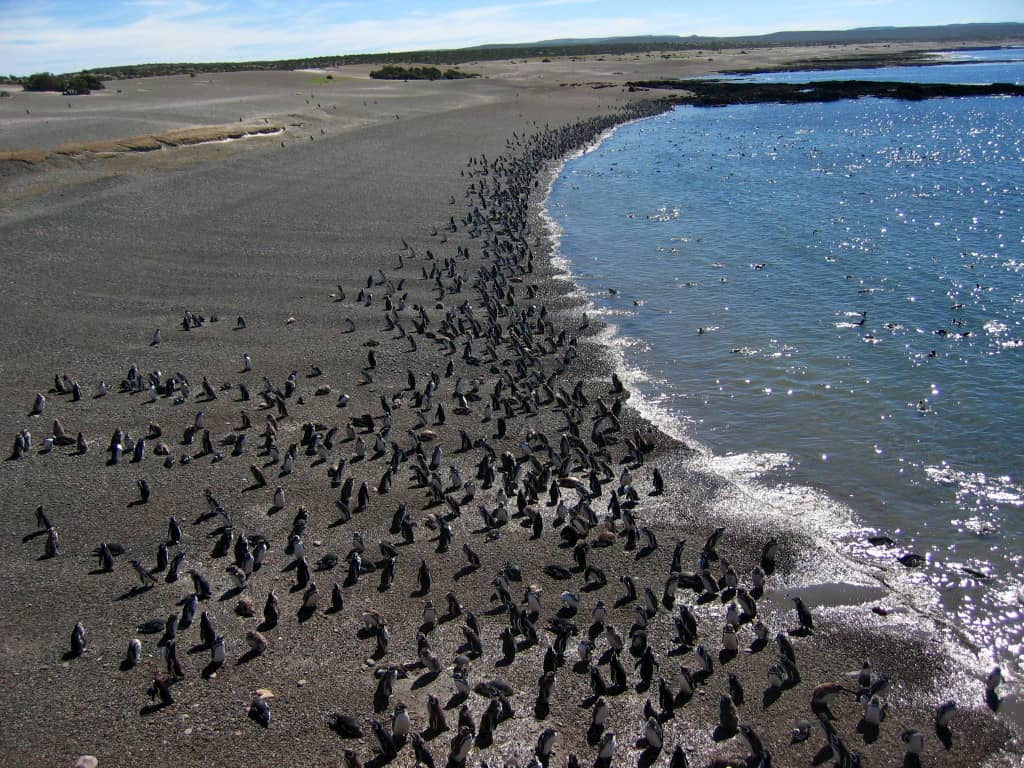
22 - Blue Patagonia, Argentina.
Blue Patagonia is a scenic marine region in Argentina, stretching from Valdés Peninsula to Tierra del Fuego.
Known for turquoise waters, it hosts diverse marine life like whales, dolphins, penguins, and various seabirds.
Península Valdés, a UNESCO World Heritage Site, is famous for whale mating and birthing spectacles.
Puerto Madryn serves as a hub for whale watching, snorkeling with sea lions, and visiting penguin colonies.
Adventurers enjoy hiking, birdwatching, diving, and outdoor activities in breathtaking, untouched coastal landscapes.
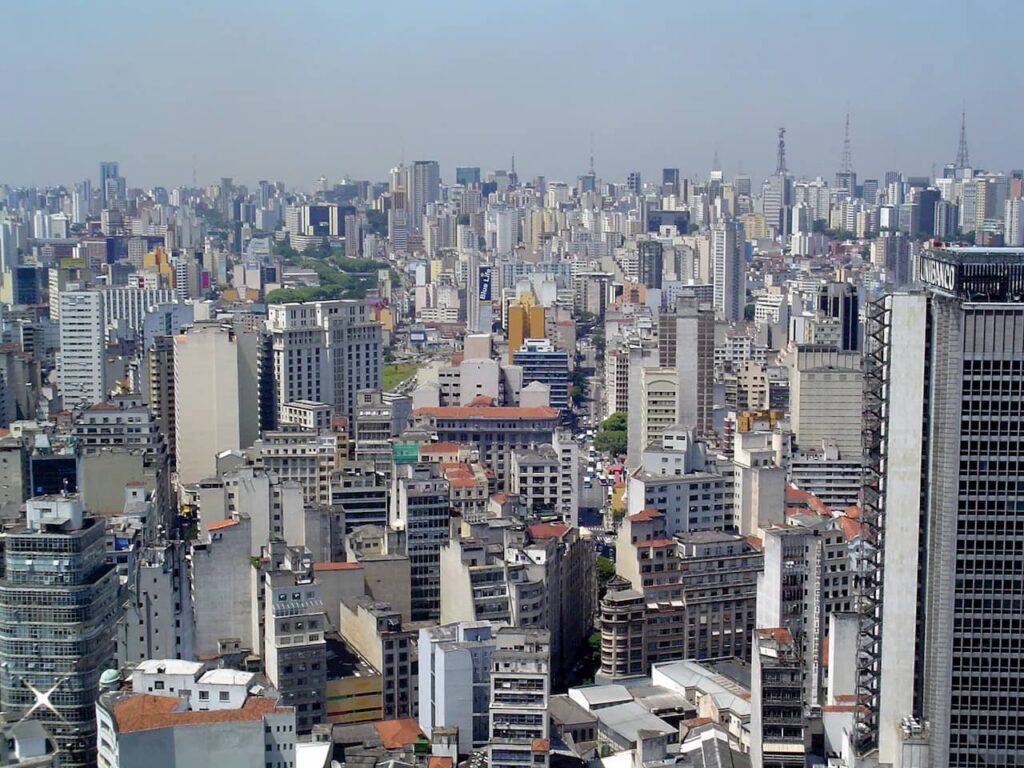
23 - São Paulo, Brazil.
São Paulo, the largest city in Brazil and one of the largest in the world, is a vibrant center of culture, business, art and diversity. Known as a bustling and cosmopolitan metropolis, São Paulo offers a unique and diverse experience for its inhabitants and visitors.
The city is a cultural melting pot, home to an impressive mix of ethnicities, cultures and traditions. The influence of immigrants from various parts of the world contributed to the richness of São Paulo’s gastronomy, art, music and traditions. You can find a wide variety of restaurants, from street food to haute cuisine, representing different cuisines from around the world.
São Paulo is a vibrant cultural center, with a wide range of theaters, museums, art galleries and cultural centers. The São Paulo Museum of Art, for example, is an icon of modern architecture and houses an extensive collection of Western art. Furthermore, the city has an active music scene, with a wide variety of shows, festivals and live performances by national and international artists.
In the economic aspect, São Paulo is an important financial and business center in Latin America. The city is home to an abundance of multinational companies, bank headquarters, corporate offices and a variety of industrial sectors.
With its diversity, intense cultural life, varied gastronomy and a dynamic atmosphere, São Paulo offers a multifaceted experience that captivates those who visit, being a reflection of Brazil itself, with its complexity, energy and diversity.
Africa

24 - Madagascar.
Madagascar is a unique and diverse island located off the southeast coast of Africa. It is the fourth-largest island in the world and is home to an extraordinary wealth of biodiversity, unique ecosystems, fascinating culture and stunning landscapes.
The wildlife in Madagascar is truly exceptional. The island is famous for being home to a wide variety of endemic species, many of which are found nowhere else in the world. Lemurs, Madagascar’s charismatic and emblematic primates, are a notable example. There are more than 100 species of lemurs on the island, each with unique characteristics and adapted to different environments.
In addition to lemurs, Madagascar is home to a myriad of unique flora and fauna, including colorful birds, chameleons, iconic baobabs and a great diversity of plant species. The richness of nature is evident in its diverse ecosystems, from lush rainforests to arid deserts and stunning coastlines.
The culture is a fascinating mix of African, Asian and European influences. The population is made up of several ethnicities, each with their own distinct traditions, languages and cultural practices. Music, dance, art and rich oral heritage are vital elements of Malagasy culture, reflected in festivals, ceremonies and the everyday life of communities.
Madagascar is also known for its spectacular landscapes. The inland mountains offer hiking opportunities and panoramic views, while the unspoilt beaches along the coast provide idyllic settings for relaxing and exploring.
